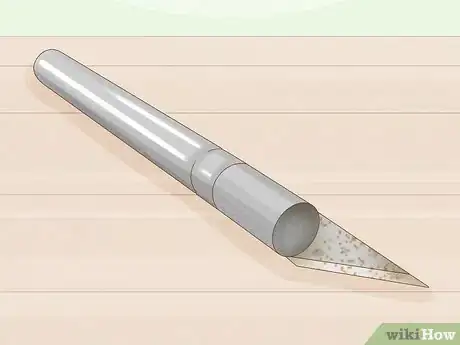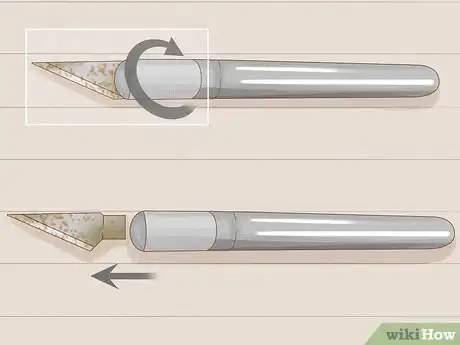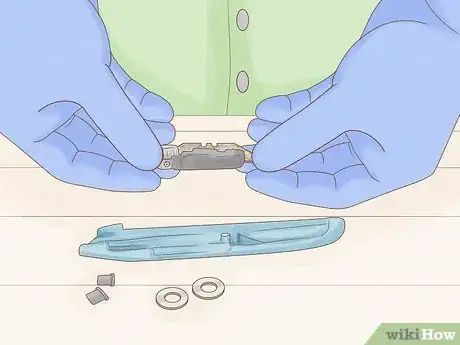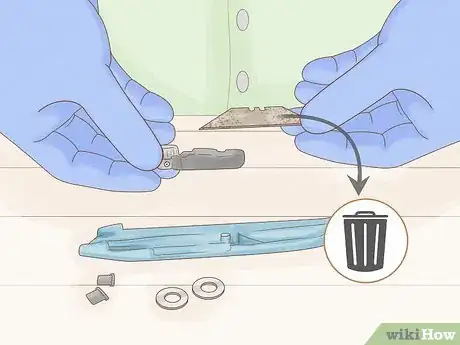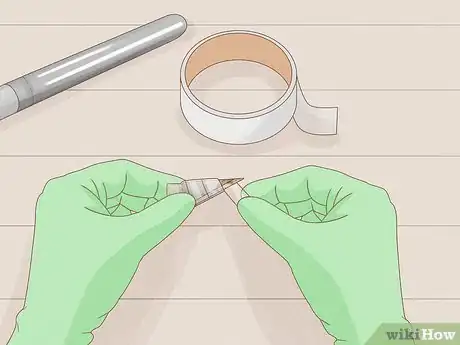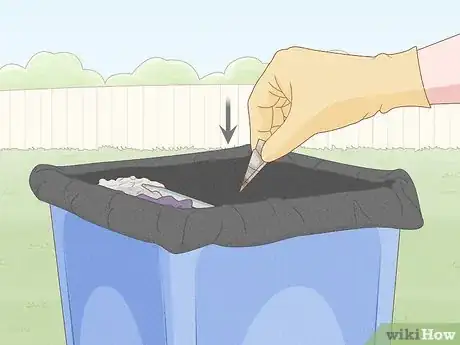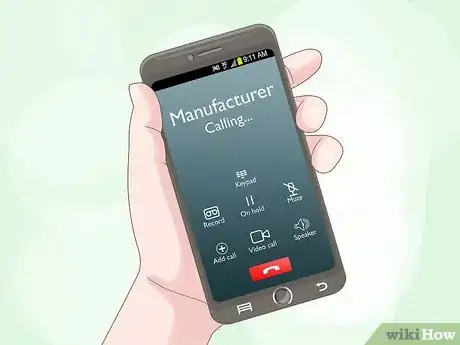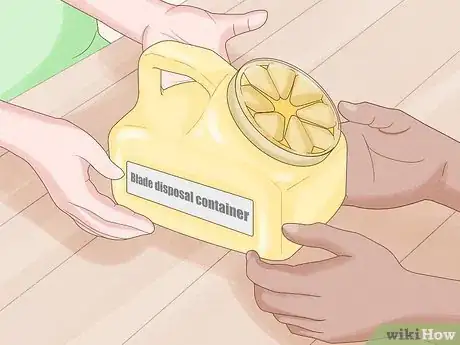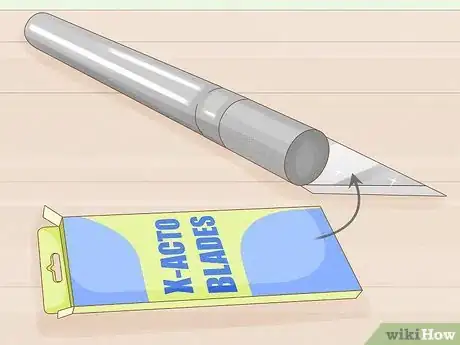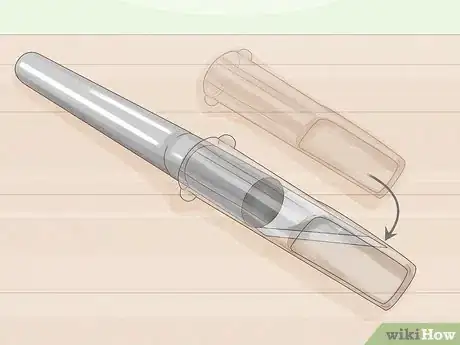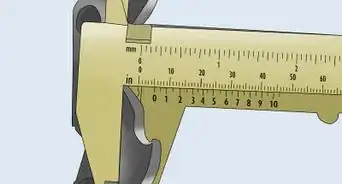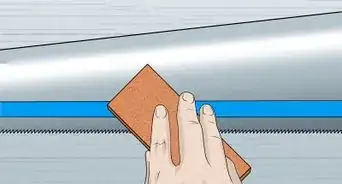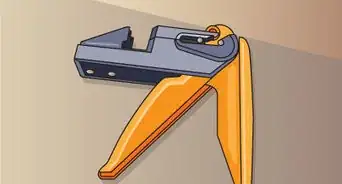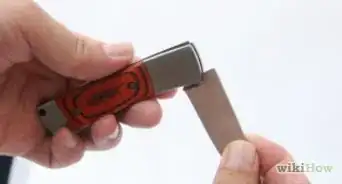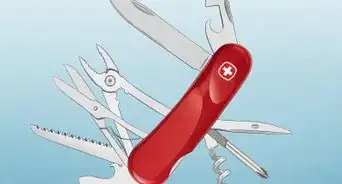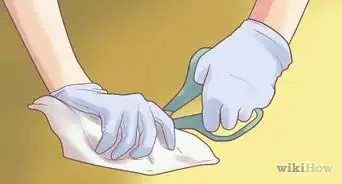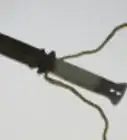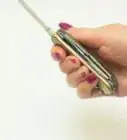This article was co-authored by wikiHow staff writer, Jennifer Mueller, JD. Jennifer Mueller is a wikiHow Content Creator. She specializes in reviewing, fact-checking, and evaluating wikiHow's content to ensure thoroughness and accuracy. Jennifer holds a JD from Indiana University Maurer School of Law in 2006.
There are 8 references cited in this article, which can be found at the bottom of the page.
This article has been viewed 11,773 times.
Learn more...
X-ACTO knives, box cutters, and utility knives are useful tools that nearly everyone has in their home. However, because the blades are so sharp, these tools can also be extremely dangerous. When the blade dulls, you have to use greater force to cut something, which puts you at greater risk of injury. As soon as you notice that the blade is getting dull, replace it with a new one and dispose of the old one in a way that keeps the sharp edge from accidentally harming someone.[1]
Steps
Removing a Dull Blade Safely
-
1Watch for signs that the blade needs to be replaced. If a blade "just isn't cutting like it used to," it's likely starting to get dull. If you find that you have to apply more pressure to get the blade to work, or if the edge of the blade has any scratches or knicks on it, it's time to replace it.[2]
- Also replace any blades that are broken or rusty, even if they still work fine. Broken and rusty blades are dangerous to work with and can cause more damage if you happen to get cut with them.
Tip: Replace your blade as soon as possible when it shows signs of dullness. Dull blades require more pressure to use, which puts you at greater risk for injury.
-
2Wear gloves while replacing dull blades. It's a good idea to wear gloves any time you're using an X-ACTO blade. While most people don't think about putting on gloves simply to open a single box, you definitely want to get those gloves if you're going to take out a dull blade. Even though the blade is dull, it can still cause serious injury if it cuts you.[3]
- The best gloves to use are thick utility gloves. Twill gardening gloves will also work. In a pinch, you might even try winter gloves. Although they won't give your hands as much protection, they're better than nothing.
Advertisement -
3Twist the metal collar of an X-ACTO knife to loosen the blade. Your X-ACTO knife has a collar with knurled metal just below the blade. Taking care to keep your fingers away from the blade, twist to the left to loosen it.[4]
- After twisting a bit, pull the back of the blade to see if it's loose. If it's not loose enough to remove the blade, twist it around some more.
-
4Unscrew the housing if you have a utility knife. For other types of knives, the blade is built into a case that screws apart. Choose a screwdriver that fits the screw on your utility knife and loosen the screw to open the case.[5]
- Make sure the blade is fully retracted before you start opening the knife. Otherwise, you could accidentally get cut by the edge of the blade.
-
5Pull out the dull blade and immediately dispose of it. If you have an X-ACTO knife, you can gently pull to release the blade. If it's loosened enough, you may even be able to turn the knife upside down and let it fall out onto the table. However, if you remove it this way, make sure it doesn't bounce or clatter to a spot where you can't find it.[6]
- If you have a special disposal case, drop the blade into the case as soon as you remove it. If you set it down and install the new blade first, you run the risk of forgetting about the old one.
Discarding X-ACTO Blades
-
1Cover the sharp edge of the blade with tape, plastic, or cardboard. Stick the sharp edge of the blade into the side of a piece of corrugated cardboard so the edge is completely covered. Tape over the cardboard to keep it secure on the blade.[7]
- Thick tape that covers the blade can work as well as cardboard. Try masking, electrical, or duct tape. You may need more than one layer to ensure that the blade won't cut through. Tape all the way around the blade so it won't come loose.
-
2Throw the wrapped blade away with your other garbage. As long as you've covered the blade to ensure it doesn't accidentally cut anyone, it's fine to toss out X-ACTO blades with the rest of your garbage. They're also safe for trash compactors.[8]
- Metal blades can typically also be recycled. If you have curbside recycling, check with the government department or recycling company to find out what safety steps you need to take to recycle the blades.[9]
-
3Contact the manufacturer to find out if they'll take back blades. If you still have the packaging that your blades came in, there may be contact information printed there. Otherwise, go to the website of the manufacturer to see if they have a take-back program.[10]
- Manufacturer take-back programs typically recycle the blades. If you don't have curbside recycling in your area but want to do your part, this is a helpful option. They'll send you a box you can use to mail your spent blades back to them.
- To mail the blades back to the manufacturer, put the box sent by the manufacturer inside another box. There's no need to label the outside in any way.[11]
-
4Buy a blade disposal box if you go through a lot of blades. Many utility blade and knife companies sell disposal boxes for X-ACTO and similar metal blades. The boxes have a small slit for you to slide the blade inside but are otherwise sealed. You can buy them at hardware stores or online.[12]
- Some sets of replacement blades also include a disposal compartment where you can deposit your spent blades.
- When your disposal box is full, you can throw it away with your regular garbage. While the blades are unlikely to come out of the slot, you might want to put a piece of tape over it.
Tip: If you buy a blade disposal box, you can also use it for other sharp items that you may need to dispose of, including razor blades. If you plan to recycle the blades, make sure all the items you put in the box are made of recyclable metal only.
Installing and Storing Fresh Blades
-
1Slide the new blade into place carefully. Hold the new blade on its sides with the sharp edge pointing away from you. Slide it into the slot for the blade and lock it in place so it doesn't fall out.[13]
- If you have a standard X-ACTO knife, all you have to do is twist the metal collar to the right to tighten the collar around the blade and lock it in place.
- For utility knives, make sure the blade is fully retracted in the casing before you screw the casing back together.
-
2Retract or cover the blades on tools as soon as possible. While it may seem like an extra step to retract the blade every time you finish making a cut, make sure the blade is completely retracted or covered anytime you aren't using the blade to make a cut.[14]
- If you have a regular X-ACTO knife, the blade doesn't retract, but comes with a plastic cover that fits securely over the blade. Always put this cover on holding the part that goes over the back of the blade and remove it using the same method.
- If you hold the portion that goes over the sharp edge of the blade, you risk cutting yourself if the cover slips.
-
3Keep extra blades in a sealed container. If you're buying extra blades, it's usually safest to keep them in the container that they come in. Make sure the container can be sealed completely so that the blades don't accidentally come out.[15]
- Also make sure that the blades can't cut through the packaging you're storing them in. This increases the risk of injury if someone grabs the box in the wrong way.
Tip: If you've lost the storage container that the blades were originally packaged in, you can use any plastic container with a lid, such as an empty prescription or over-the-counter medicine bottle.
-
4Put blades in a locked toolbox or cabinet. If you have your X-ACTO blades or other utility knives at home, use a locking toolbox or cabinet to keep them secure at all times. If there are small children running around, keep them up high where the kids can't reach them.[16]
- Have a small first aid kit in your toolbox or workshop so you can tend to a cut quickly if something happens.
Warnings
- Even a dull X-ACTO blade is still extremely sharp. Take care when handling dull blades and make sure the edge is securely covered.[18]⧼thumbs_response⧽
Things You'll Need
- Corrugated cardboard
- Masking, duct, or electrical tape
- Screwdriver (for utility knife cases)
- Sealed container (for blade storage or disposal)
References
- ↑ https://carleton.ca/ehs/wp-content/uploads/Safety-Sheet-4-Box-Cutter-Safety_FINAL1.pdf
- ↑ https://www.k-state.edu/today/announcement/?id=1302
- ↑ https://carleton.ca/ehs/wp-content/uploads/Safety-Sheet-4-Box-Cutter-Safety_FINAL1.pdf
- ↑ https://youtu.be/UgyrlJa3ZMU
- ↑ https://youtu.be/Nxz1DCkNgbQ
- ↑ https://youtu.be/UgyrlJa3ZMU
- ↑ https://toolguyd.com/how-do-you-dispose-of-dull-utility-knife-blades/
- ↑ https://toolguyd.com/how-do-you-dispose-of-dull-utility-knife-blades/
- ↑ https://recyclenation.com/2015/10/how-to-recycle-box-cutters-and-blades/
- ↑ https://recyclenation.com/2015/10/how-to-recycle-box-cutters-and-blades/
- ↑ https://pe.usps.com/text/pub52/pub52c4_015.htm
- ↑ https://recyclenation.com/2015/10/how-to-recycle-box-cutters-and-blades/
- ↑ https://youtu.be/UgyrlJa3ZMU
- ↑ https://www.k-state.edu/today/announcement/?id=1302
- ↑ https://toolguyd.com/how-do-you-dispose-of-dull-utility-knife-blades/
- ↑ https://kidshealth.org/en/parents/safety-cuts.html
- ↑ https://www.k-state.edu/today/announcement/?id=1302
- ↑ https://toolguyd.com/how-do-you-dispose-of-dull-utility-knife-blades/
